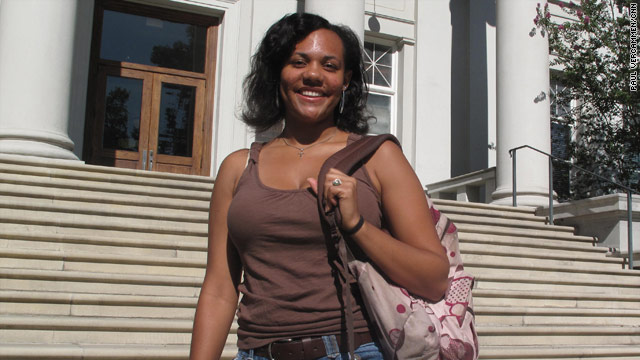 Colleges ease financial burden through increased grants from endowments
Colleges ease financial burden through increased grants from endowments

Seanna Leath grew up poor in Little Rock, Arkansas, dodging evictions and urban violence.
Somehow, she tuned out the chaos well enough to earn outstanding grades in high school. Now the 20-year-old is thriving at California’s Pomona College, the sixth-ranked liberal arts school in America, according U.S. News and World Report.
Pomona pays almost all of Leath’s $50,000 annual tab for tuition, room and board. Now a junior, Leath still seems in awe of the stately campus of 1,560 students.
“Three years ago I just would not have believed that I would be here,” said Leath, a junior who has a double major in psychology and African studies. “I never thought I could go to Pomona and not have huge loans.”
While many universities are reporting tuition increases for the 2011-2012 year, prospective students may still be able to find some relief through increased scholarships at some institutions, especially elite private schools with large endowments.
While the cost of college continues to skyrocket, families reported paying 9{53c6eff5ce19621f7316832cfedf08caab022021f1679c62c3f44b8900ceaf72} less for an education in 2010-2011 than a year ago, according to a Sallie Mae survey.
The savings come from cost-cutting measures such as attending lower-cost colleges, living at home or going to school part-time, according to Sallie Mae. But grants and scholarships played an increasingly important role, covering 33{53c6eff5ce19621f7316832cfedf08caab022021f1679c62c3f44b8900ceaf72} of college costs in 2010-2011, up from 23{53c6eff5ce19621f7316832cfedf08caab022021f1679c62c3f44b8900ceaf72} the previous year.
Pomona College President David Oxtoby said elite schools such as his have a “social obligation” to offer scholarships to underprivileged students.
“There is a core commitment from the college and the trustees, affordability and financial aid are among our top priorities,” Oxtoby said. “When we moved to a policy of replacing loans with grants, we knew it would cost us money. I can’t say we don’t worry about the future.”
Giving more scholarships drains endowments, which can also take huge hits in economic downturns, so Pomona did some belt-tightening, Oxtoby said.
“Pomona made adjustments, instituting a voluntary retirement program, freezing salaries, reducing expenditures in buildings,” Oxtoby said.
“We collaborated with our neighboring colleges. For example, we cut back on sabbatical faculty replacements, by looking to see if there was a similar course being offered at (neighboring) Scripps College,” he said.
Pomona students can take classes at the adjacent Claremont Colleges such as Scripps and Claremont McKenna.
Universities started becoming more generous about four years ago, when Iowa Sen. Chuck Grassley accused the institutions of stockpiling wealth built up with government tax breaks. Congress threatened to revoke universities’ tax advantaged status if they did not make an education more affordable by tapping into endowments.
U.S. News and World Report lists Harvard at the top of the endowment derby, with $26 billion in 2010. Yale is a distant second at $16 billion in 2009.
Pomona reports its endowment at $1.4 billion, with $25.2 million given in scholarships last year. From 2009 to 2011, 53{53c6eff5ce19621f7316832cfedf08caab022021f1679c62c3f44b8900ceaf72} of Pomona students received financial aid from the school, with the average scholarship at $34,674, according to the school.
Leath said she did not hear of Pomona until mid-December in her senior year at North Little Rock High school.
Based on her glowing grades and test scores, a friend’s mother urged Leath to apply. Back in Little Rock among friends, there’s still confusion about where Leath attends college.
“Some say, ‘Is that a culinary institute?'” Leath said, smiling. “Or someone asked, ‘Is that Panama?'”
In fact, Leath landed a dream education at a school with an acceptance rate of 14{53c6eff5ce19621f7316832cfedf08caab022021f1679c62c3f44b8900ceaf72}. And now, Leath’s eyes are open wider to more opportunities.
Leath wants to pursue graduate school in psychology specializing in education. Someday, she intends to counsel high school students from underprivileged backgrounds on how to find opportunities at America’s colleges and universities.
“You have to reach out to the institutions,” Leath said. “You have to go beyond what is readily available. You have to do the research to attain knowledge about the schools that are not in front of you.”
